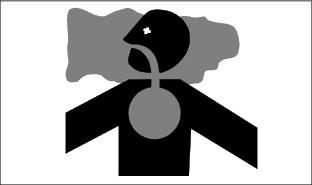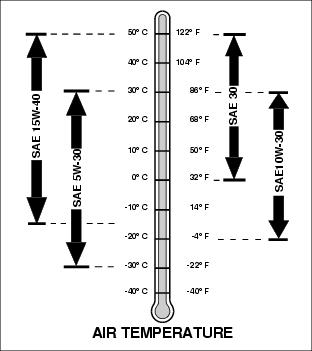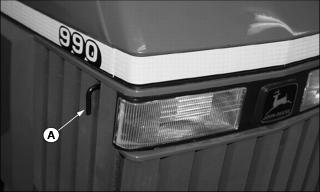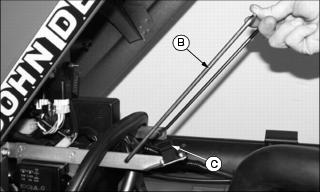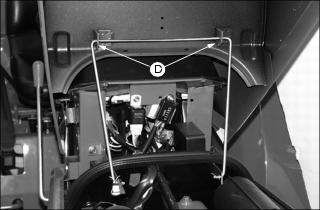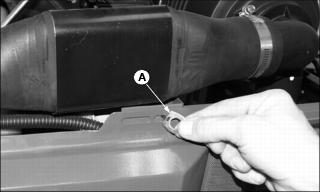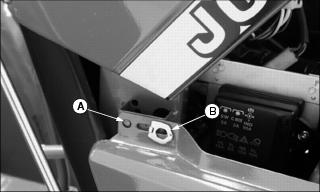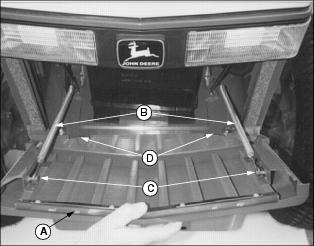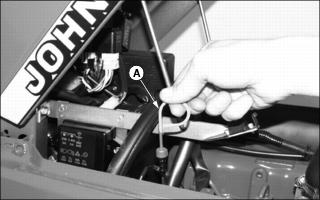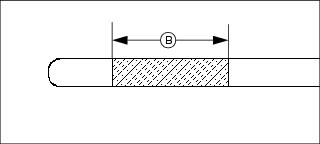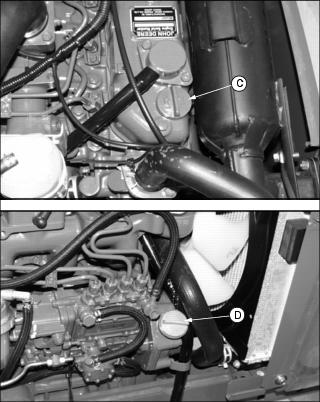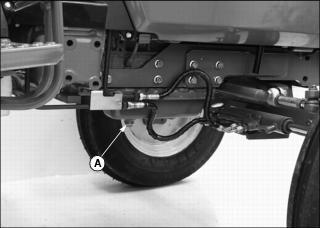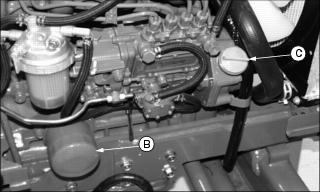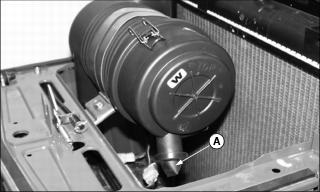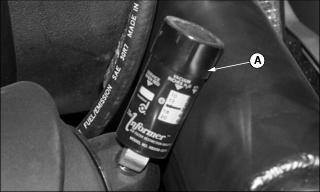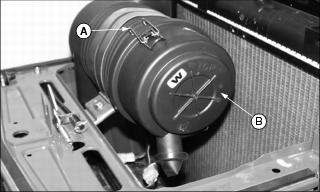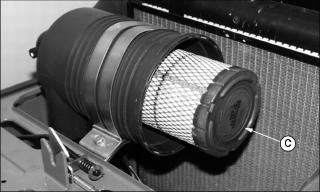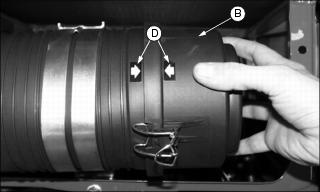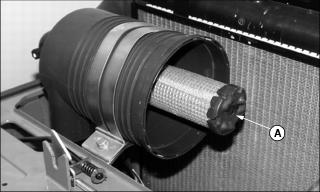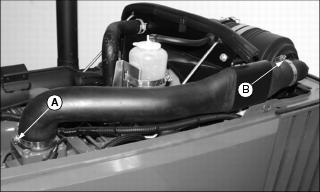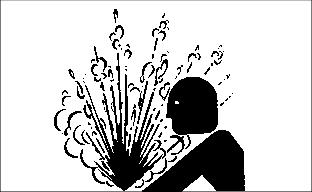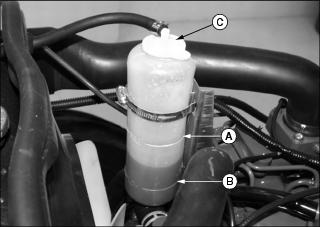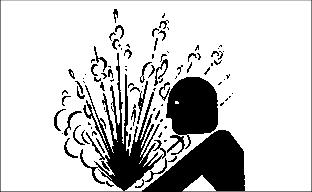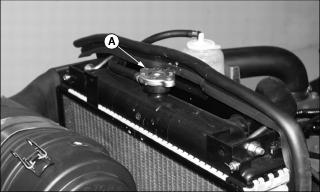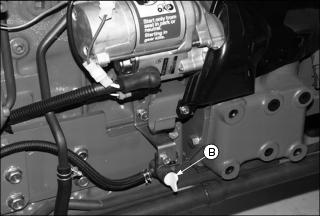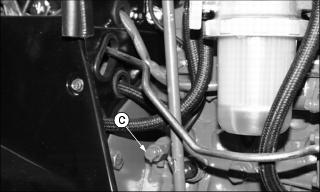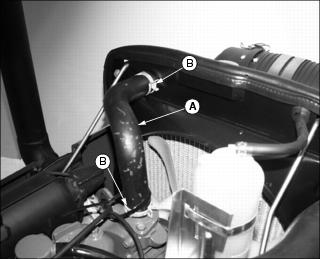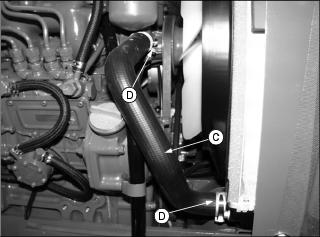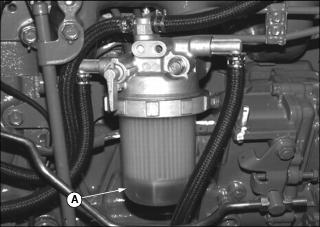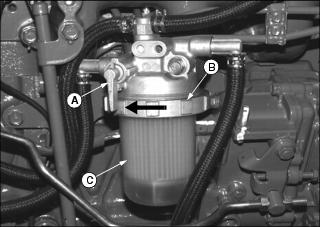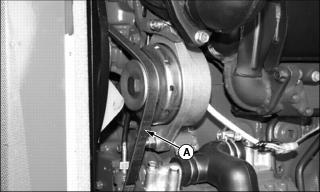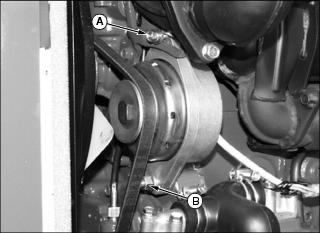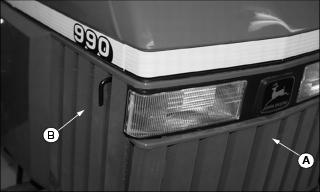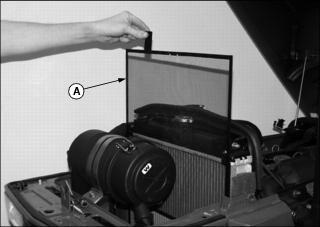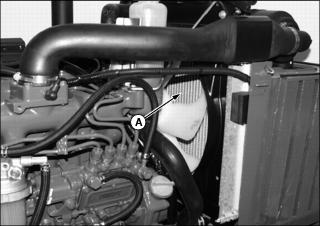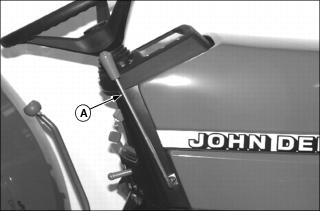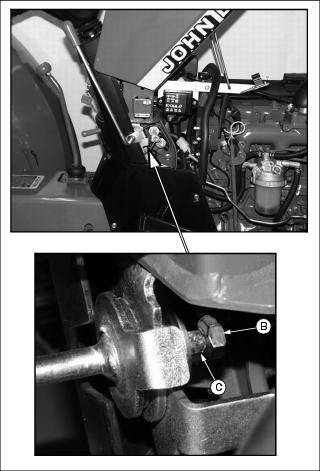Compact Utility Tractor with Gear Transmission
Introduction
Product Identification
Safety
Operating
Replacement Parts
Service Intervals
Service Lubrication
Service Engine
Engine Warranty Maintenance Statement
Removing and Installing Engine Side Panels
Removing and Installing Front Grille
Changing Engine Oil and Filter
Clean Air Filter Dust Unloading Valve
Checking Optional Air Restriction Indicator
Checking Air Filter Intake Hose Clamps
Checking Radiator Coolant Level
Checking Radiator Hoses and Clamps
Checking Fuel Filter Sediment Bowl
Cleaning Fuel Filter Sediment Bowl and Replacing Filter
Checking and Adjusting Alternator Belt Tension
Cleaning Grille and Side Screens
Cleaning Radiator Cooling Screen
Cleaning Radiator Cooling Fins
Adjusting Engine Speed Hand Throttle
Service Transmission
Service Electrical
Service Miscellaneous
Troubleshooting
Storage
Assembly
Specifications
Warranty
John Deere Quality Statement
Service Record

Service Engine
Engine Warranty Maintenance Statement
Maintenance, repair, or replacement of the emission control devices and systems on this engine, which are being done at the customers expense, may be performed by any nonroad engine repair establishment or individual. Warranty repairs must be performed by an authorized John Deere dealer.
Fuel Injection Pump
IMPORTANT: Avoid damage! Do not clean a warm or hot fuel injection pump with steam or water. Clear debris from under injection pump regularly. |
NOTE: The fuel injection pump is calibrated by the engine manufacturer and should not require any adjustments.
If engine is hard to start, lacks power, or runs rough, see Troubleshooting Section of this manual.
After performing the check in the troubleshooting section and your engine is still not performing correctly, contact your John Deere dealer.
Fuel Injection Nozzles
If injection nozzles are not working correctly or are dirty, engine will run poorly. See your John Deere dealer for service.
Avoid Fumes
If it is necessary to run an engine in an enclosed area, use an exhaust pipe extension to remove the fumes. |
Engine Oil
Use oil viscosity based on the expected air temperature range during the period between oil changes.
The following John Deere oils are preferred:
· TORQ-GARD SUPREME® (SAE 5W-30)
The following John Deere oils are also recommended, based on their specified temperature range:
Other oils may be used if above John Deere oils are not available, provided they meet one of the following specifications:
· SAE 15W-40-API Service Classification CF-4 or higher.
· SAE 5W-30-API Service Classification CC or higher.
· SAE 10W-30-API Service Classification CF or higher.
· SAE 30-API Service Classification CF or higher.
If diesel fuel exceeding 0.5% sulfur content is used, reduce the service interval for engine oil and filter by 50%.
Raising and Lowering Hood
Raising
1. Pull outward on hood latch (A). Lift and hold up hood.
2. Remove hood support rod (B) from storage clip (C).
3. Place hood support rod into holders (D).
Lowering
1. Lift hood slightly to remove weight from hood support rod.
2. Place hood support rod in storage clip.
4. Push down on front of hood to lock latch.
Removing and Installing Engine Side Panels
Removing
2. Flip up and turn spring loaded fastener (A) to the horizontal position.
3. Repeat for fastener at rear of side panel.
4. Lift side panel off two lower rod supports to remove.
Installing
1. Place two lower rods on engine side panel into rod supports on tractor.
2. Align hole (A) at rear of side panel with stud on tractor.
3. Place fastener (B) through slot. Turn fastener vertical and flip it down to secure panel.
4. Secure fastener at front end of side panel in the same manner.
Removing and Installing Front Grille
Removing
1. Pull downward at top side of front grille (A) to expose springs (B). Hold grille securely.
2. Remove springs from studs (C).
3. Lift grille high enough to clear alignment tabs (D) and remove grille.
Installing
1. Place alignment tabs at bottom side of front grille into grooves in tractor frame.
2. Hook springs around studs on grille.
3. Seat grille into position under headlights.
Checking Engine Oil Level
NOTE: Check engine oil level when oil is cold.
1. Park machine safely. (See Parking Safely in the SAFETY section.)
4. Remove dipstick (A) at right rear side of engine. Wipe it clean with a rag.
5. Install dipstick so it is completely seated in dipstick tube.
6. Remove dipstick. Verify oil on dipstick is within operating range (B).
a. Remove oil fill cap (C) on valve cover, or remove right side engine panel and remove oil fill cap (D).
b. Add proper engine oil until oil level is within operating range on dipstick. Do not overfill.
9. Install and tighten oil fill cap.
10. Install right engine side panel if removed.
Changing Engine Oil and Filter
1. Run engine a few minutes to warm oil.
2. Park machine safely. (See Parking Safely in the SAFETY section.)
4. Place drain pan under oil drain plug (A). Remove drain plug and allow all oil to drain.
5. Remove right side engine panel.
6. Place drain pan under engine oil filter (B). Turn filter counter-clockwise to remove. Allow residual oil to drain.
7. Apply a film of clean engine oil to rubber gasket of new filter.
8. Install new filter. Turn filter to the right until gasket makes contact with the mounting surface. Tighten 1/2 - 3/4 turn after gasket contact.
9. Install and tighten drain plug.
10. Remove oil fill cap (C) or oil fill cap located on engine valve cover.
11. Add approximately 5.3 L (5.6 qt) of proper engine oil to filler opening.
12. Install and tighten oil fill cap.
13. Start and run engine at a slow speed.
16. Check engine oil level. Install dipstick.
17. Install right side engine shield.
Clean Air Filter Dust Unloading Valve
IMPORTANT: Avoid damage! Prevent damage to the engine. Never operate engine without air cleaner elements and rubber dust unloading valve installed. |
1. Park machine safely. (See Parking Safely in the SAFETY section.)
3. Remove and clean rubber dust unloading valve (A). Replace if damaged.
Checking Optional Air Restriction Indicator
1. Park machine safely. (See Parking Safely in the SAFETY section.)
3. Check air restriction indicator (A) located at end of air cleaner canister. If red plunger inside indicator is visible, the air filter elements require immediate service.
Replacing Air Filter Elements
Primary Air Filter Element
1. Park machine safely. (See Parking Safely in the SAFETY section.)
3. Release latches (A) located at both sides of air filter canister.
4. Remove cover (B) from air filter canister.
5. Remove and discard primary element (C). Replace with a new primary element.
6. Install cover (B) onto air filter canister so arrows (D) are aligned. Secure latches (A).
7. If equipped with air restriction indicator: push reset button on top of air restriction indicator.
a. Push reset button on top of air restriction indicator.
b. Start and run engine for approximately one minute at maximum speed.
c. Stop engine. Check air restriction indicator. If internal red plunger is visible, replace secondary air filter element.
Secondary Air Filter Element
1. Remove primary air filter element.
2. Remove and discard secondary air filter element (A). Replace with a new secondary air filter element.
3. Install primary air filter element.
Checking Air Filter Intake Hose Clamps
1. Park machine safely. (See Parking Safely in the SAFETY section.)
3. Tighten air filter intake hose clamps (A) and (B).
Service Cooling System Safely
Engine Coolant
The following John Deere coolant is preferred:
· PRE-DILUTED DIESEL ENGINE ANTI-FREEZE/SUMMER COOLANT (TY16036).
If preferred pre-diluted coolant is not available, the following John Deere concentrate is recommended:
· DIESEL ENGINE ANTI-FREEZE/SUMMER COOLANT CONCENTRATE (TY16034).
If neither of the above coolants are available, use a ethylene glycol base coolant. These coolants usually have labels stating "For Automobile and Light Duty Service." These products are also often labeled for use in aluminum engines and meet the following specification:
Check container label before using.
Mix approximately 50 percent antifreeze with 50 percent distilled or deionized water. This mixture will provide freeze protection to -37 degrees C (-34 degrees F).
Certain geographical areas may require lower temperature protection. See the label on your antifreeze container or consult your John Deere dealer to obtain the latest information and recommendations.
The preferred antifreeze provides:
· Corrosion-resistant environment within the cooling system.
· Compatibility with cooling system hose and seal material.
· Protection during cold and hot weather operations.
Checking Engine Speeds
Check engine speeds when engine is warmed up and not under load.
· Slow idle (no load) - 925 rpm
Fast idle (no load) - 2875 rpm
· If above engine speeds are not to specifications, see your John Deere dealer.
Checking Radiator Coolant Level
1. Park machine safely. (See Parking Safely in the SAFETY section.)
· If engine is warm, coolant level should be between FULL line (A) and LOW line (B) on the coolant overflow tank.
· If engine is cold, coolant level should be at LOW line (B) on the coolant overflow tank.
a. Remove cap (C) from overflow tank.
b. Fill tank to appropriate level with specified coolant.
c. Install cap on overflow tank.
Servicing Cooling System
IMPORTANT: Avoid damage! To prevent damage to cylinder head or block: |
Draining Cooling System
1. Park machine safely. (See Parking Safely in the SAFETY section.)
2. Allow engine to cool completely.
4. Remove both engine side panels.
5. Remove radiator cap (A) slowly.
6. Prepare drain pan under radiator petcock (B) at left side of engine. Open petcock and allow all coolant to drain.
7. Prepare drain pan under engine block drain plug (C) at right side of engine. Loosen drain plug and allow all coolant to drain.
8. Close radiator petcock and tighten engine block drain plug.
Flushing Cooling System
2. Pour contents of one can of John Deere Cooling System Cleaner, John Deere Cooling System Quick Flush, or an equivalent into the radiator. Fill cooling system with clean water. Follow directions on can.
3. Install and tighten radiator cap.
4. Start and run engine until it reaches operating temperature.
6. Prepare drain pan under radiator petcock at left side of engine. Open petcock immediately before rust and dirt settle. Allow flushing solution to drain into pan.
7. Prepare drain pan under engine block drain plug at right side of engine. Loosen drain plug. Allow flushing solution to drain into pan.
8. Close radiator petcock and tighten engine block drain plug after all flushing solution has drained.
Filling Cooling System
1. Fill radiator with correct quantity of specified coolant.
2. Install and tighten radiator cap.
3. Start and run engine until it reaches operating temperature.
5. Check radiator coolant level in overflow tank. Fill to proper level if necessary.
Checking Radiator Hoses and Clamps
1. Park machine safely. (See Parking Safely in the SAFETY section.)
3. Remove right side engine panel.
4. Check upper radiator hose (A) for damage and deterioration. Replace if hose feels spongy, brittle, or is cracked.
5. Check hose clamps (B) for looseness. If loose, replace clamps.
6. Check lower radiator hose (C) for damage and deterioration. Replace if hose feels spongy, brittle, or is cracked.
7. Check hose clamps (D) for looseness. If loose, replace clamps.
Checking Fuel Filter Sediment Bowl
1. Park machine safely. (See Parking Safely in the SAFETY section.)
3. Remove right side engine panel.
NOTE: Red ring in bottom of sediment bowl will float on water. If ring is floating, sediment bowl should be cleaned.
4. Check for water and deposits in sediment bowl (A).
5. Clean sediment bowl and replace fuel filter if necessary.
Cleaning Fuel Filter Sediment Bowl and Replacing Filter
1. Park machine safely. (See Parking Safely in the SAFETY section.) Allow engine to cool.
3. Remove right side engine panel.
4. Turn fuel shut-off valve (A) to closed position.
5. Prepare drain pan under fuel filter sediment bowl to catch fuel spillage.
6. Turn locking collar (B) in direction of arrow to remove bowl (C).
7. Remove and discard the fuel filter.
8. Remove and retain the plastic ring and spring from sediment bowl.
9. Clean bowl, plastic ring, and spring.
10. Install plastic ring and spring in original position in sediment bowl.
11. Install new filter to filter head.
12. Place sediment bowl and locking collar in position.
13. Tighten locking collar to filter head to secure.
14. Turn fuel shut-off valve to open position.
NOTE: Fuel system is self bleeding.
15. Crank engine to bleed fuel system.
Checking and Adjusting Alternator Belt Tension
Checking Belt Tension
1. Park machine safely. (See Parking Safely in the SAFETY section.) Allow engine to cool.
3. Remove left side engine panel.
4. Apply moderate thumb pressure to belt (A) halfway between the pulleys. Belt should deflect inward approximately 13 mm (1/2 in.).
5. Adjust belt tension if deflection is more or less than specified.
Adjusting Belt Tension
3. Apply outward pressure to alternator housing.
4. Tighten bolts (A) and (B) completely.
6. Install left side engine panel.
Cleaning Grille and Side Screens
IMPORTANT: Avoid damage! Grille and side screens must be clean to prevent engine from overheating and to allow adequate air intake. |
1. Check grille (A) and both side screens (B) for dirt, grass clippings and debris.
2. If grille and side screens are dirty, clean with a brush or cloth.
Cleaning Radiator Cooling Screen
IMPORTANT: Avoid damage! The radiator cooling screen must be clean to prevent engine from overheating and to allow adequate air intake. |
1. Park machine safely. (See Parking Safely in the SAFETY section.)
3. Lift and remove radiator screen (A).
4. Clean screen with compressed air, brush or cloth.
Cleaning Radiator Cooling Fins
1. Park vehicle safely. (See Parking Safely in the SAFETY section.) Allow engine to cool.
3. Remove both engine side panels.
4. Remove radiator cooling screen.
6. Remove all dirt and debris from radiator fins (A) using low pressure compressed air or water. Clean in direction (A), away from engine.
7. Clean radiator cooling screen.
8. Install radiator cooling screen.
9. Install grille and both engine side panels.
Adjusting Engine Speed Hand Throttle
Engine speed hand throttle (A) may be adjusted to increase or decrease the amount of force required to move the lever through the operating range.
1. Park machine safely. (See Parking Safely in the SAFETY section.)
3. Remove right side engine panel.
5. Adjust throttle lever friction nut (C):
· Loosen friction nut to decrease drag.
· Tighten friction nut to increase drag.
6. Tighten jam nut (B) to lock the adjustment.
7. Check movement or throttle lever for proper drag.

